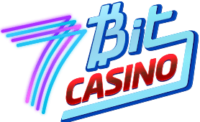Best in Slot
Welcome to Best In Slot, your ultimate guide to the online gambling world. As the foremost gaming and gambling news portal, we’re dedicated to bringing you the latest in industry news, expert reviews, and exclusive insights into the best online casinos. Our commitment goes beyond the average; we dive deep to ensure you have access to secure, reputable casino sites and negotiate unmatched exclusive bonuses that elevate your gaming experience. Whether it’s Poker, Bingo, or Slots, Best In Slot stands as the definitive source for savvy online gamblers seeking the best deals and the most reliable information. Join our community and discover why we’re the best in the game.
Top Slot Bonuses
| Rank | Casino | Bonus | Rating | Visit |
|---|---|---|---|---|
| 1 |

|
5BTC + 180 Free Spins | VisitReview | |
| 2 |

|
50 Free Spins | VisitReview | |
| 3 |

|
100% UP TO $1000 | VisitReview | |
| 4 |

|
100% Bonus + 100 Free Spins | VisitReview | |
| 5 |

|
100% Bonus / 50 Free Spins | VisitReview | |
| 6 |

|
100 Free Spins + 100% Bonus | VisitReview |
About best in Slot
Best In Slot, the premier destination for aficionados of gaming and gambling news. As the leading authority in the online casino space, we are committed to delivering comprehensive guides, incisive reviews, and the latest updates from the world of online gambling. Our mission is to provide you with unparalleled insights into the gaming industry, ensuring you have access to the most trusted and secure online casinos.
At Best In Slot, we set ourselves apart with our meticulous approach to curating the finest content for our readers. Our team of experts delves deep into the intricacies of the gambling world, bringing you up-to-the-minute industry news, well-researched articles, and reviews filled with the latest and most relevant information. We understand the importance of trust, which is why we recommend only the most reputable online casinos, verified for their security and fairness.
Our commitment to excellence doesn’t stop at providing top-notch content; we also negotiate exclusive, unbeatable bonuses for our community. Thanks to our strong relationships with leading online casinos, we offer you thousands of dollars in exclusive bonuses that you won’t find anywhere else. Whether you’re a fan of Poker, Bingo, Slots, or any other form of online gambling, Best In Slot is your gateway to the best bonuses and the most reliable gambling news portal on the web. Join us and elevate your gaming experience with the best the internet has to offer.
Latest News

Spotlight Shines on Silver Legacy Resort Casino in Reno as Visitor Numbers Soar
Situated in the vibrant heart of Reno, Nevada, Silver Legacy Resort Casino has seen a significant uptick in popularity, firmly establishing itself as a key destination for both gamers and...

Rising Star: Desert Diamond Casino Surges in Popularity in Tucson, Arizona
Located in the heart of Tucson, Arizona, Desert Diamond Casino has rapidly become a focal point for entertainment and leisure in the region, marking a significant rise in popularity. This...

Golden Nugget Atlantic City Hits Jackpot in Popularity
Nestled along the famous Marina District, Golden Nugget Atlantic City has recently experienced an extraordinary rise in visitor numbers, solidifying its status as one of the premier destinations in New...

Rising Sun Over River City: Ameristar Casino Hotel East Chicago Booms in Popularity
Situated in the bustling industrial backdrop of East Chicago, Indiana, Ameristar Casino Hotel has recently seen a spike in its popularity, asserting its place as a must-visit entertainment and gaming...

Isle Casino Hotel Bettendorf: Where Luck Meets Luxury on the Mississippi
Perched gracefully along the Mississippi River, Isle Casino Hotel Bettendorf has carved out a niche as a beacon of entertainment in the Midwest, boasting unprecedented popularity this season. Known for...
